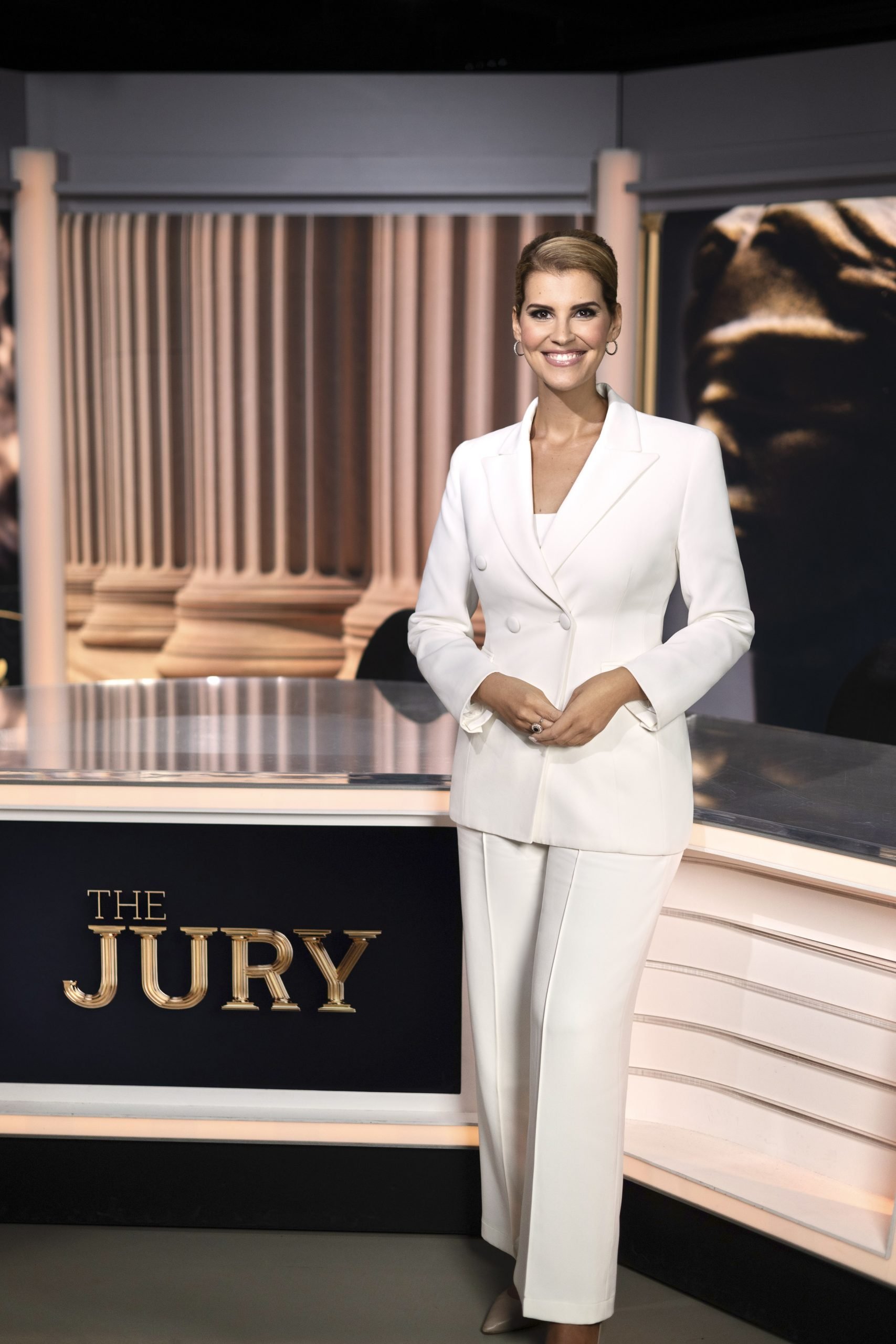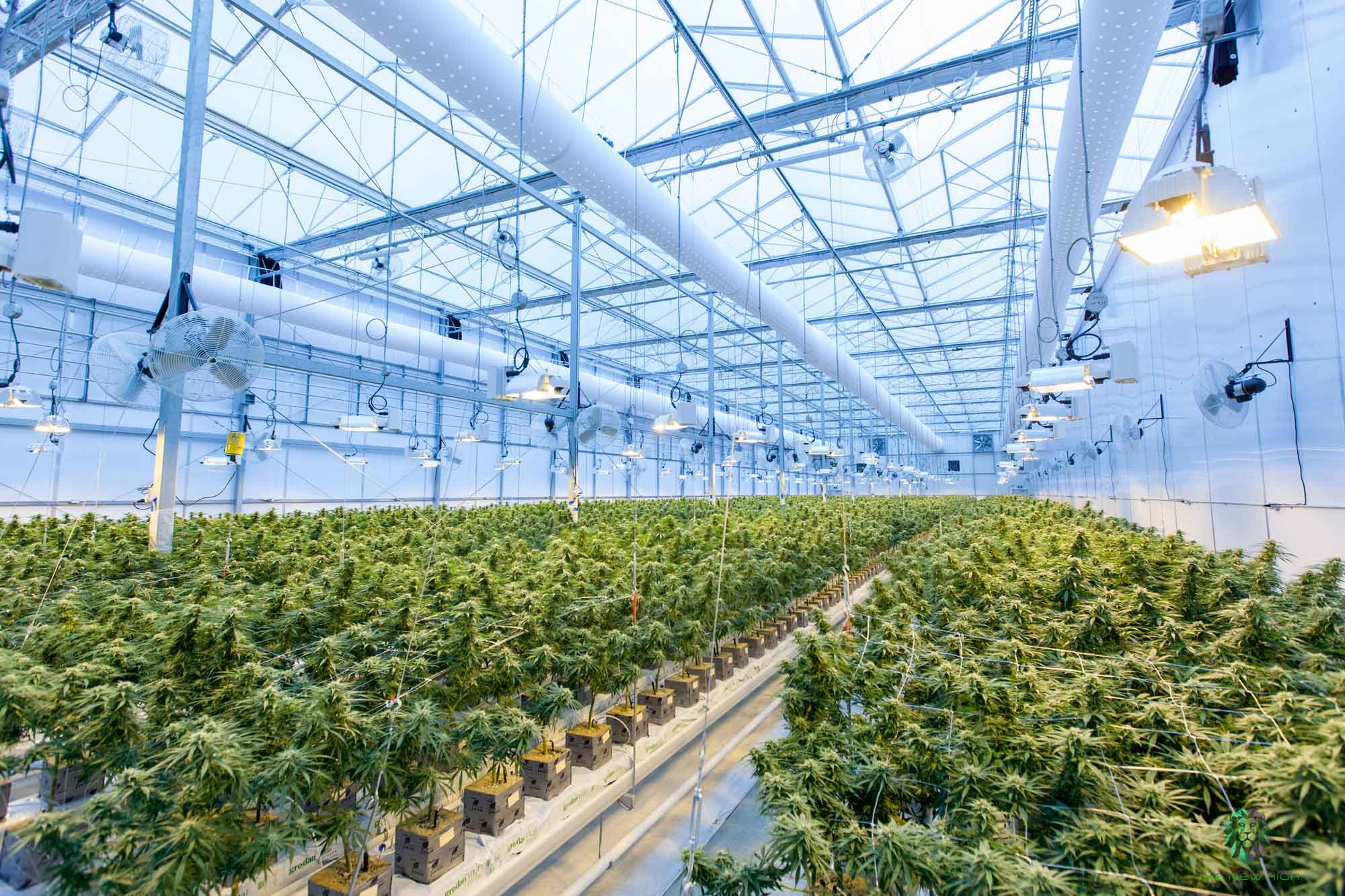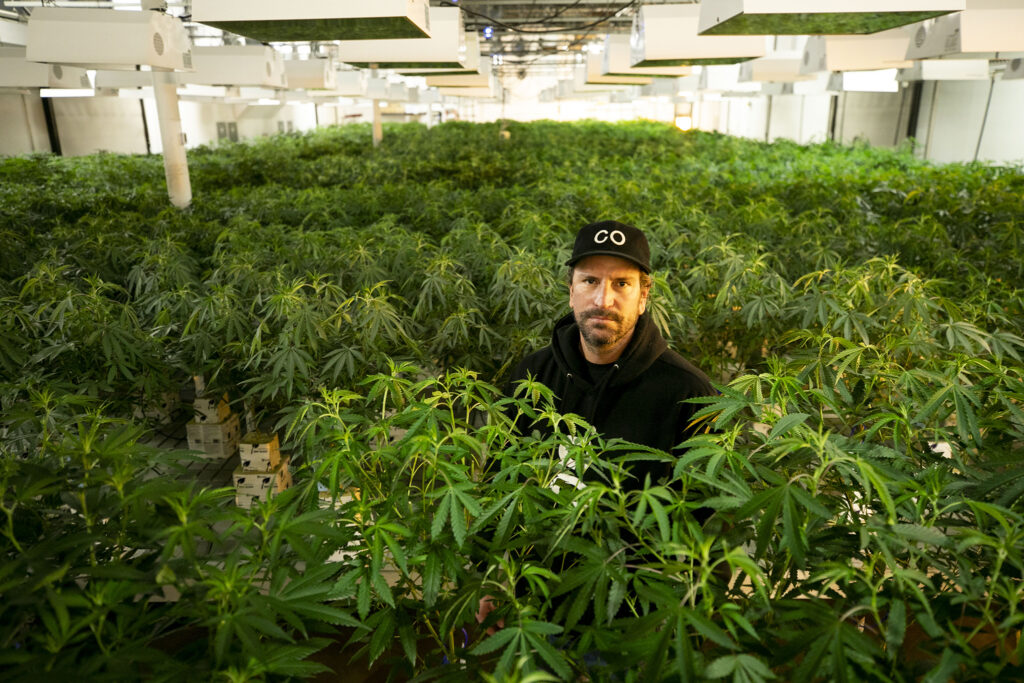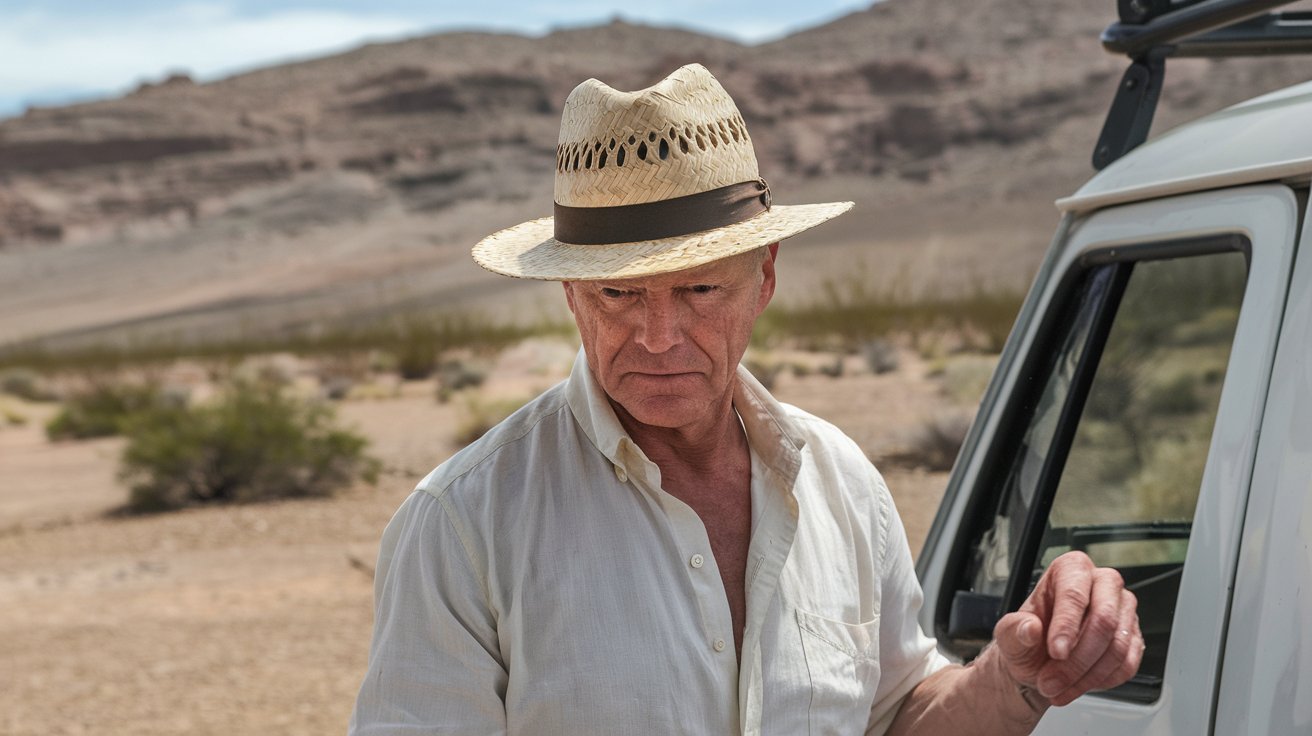News
Jury News: Understanding the Role, Influence, and Challenges of the Jury System
Published
3 months agoon
By
Harry
The concept of a jury trial is one of the cornerstones of the legal system in many democratic societies. In countries like the United States, the United Kingdom, and Australia, juries are tasked with determining the facts of a case, rendering verdicts, and helping to ensure that justice is served. While juries are often seen as symbols of fairness and democracy, recent discussions have brought the role of juries into sharper focus, particularly regarding their influence on verdicts, biases, challenges, and even issues related to jury misconduct.
“Jury news” refers to the ongoing discussions, updates, and developments related to jury trials, jury selection, jury misconduct, and the broader implications of the jury system. This article aims to explore the role of juries in modern legal systems, the challenges they face, the impact of jury news on public opinion, and the evolving landscape of how juries function within the judicial process.
The Role of the Jury in the Legal System
A jury is typically composed of a group of citizens who are selected to hear the evidence in a trial and render a verdict based on that evidence. The size of a jury can vary, but it is commonly 12 members in criminal trials, especially in jurisdictions like the United States and the United Kingdom. Juries are meant to provide a fair and impartial assessment of the case, free from bias or undue influence. Their primary responsibility is to weigh the evidence presented during the trial and determine whether the defendant is guilty or not guilty, or whether the plaintiff or defendant in a civil case is liable.
Jury trials offer several important benefits:
- Public Participation: The jury system allows ordinary citizens to participate directly in the justice system, ensuring that trials reflect community standards and values.
- Impartial Decision-Making: Juries, when functioning properly, are meant to be impartial decision-makers, free from political or professional bias. The diversity of jury members can help balance out individual biases.
- Checks and Balances: A jury helps prevent the concentration of too much power in the hands of judges or legal professionals. The collective judgment of a group of people can provide a more balanced perspective on a case.
- Protection Against Corruption: Juries can serve as a safeguard against corruption, as the decision to convict or acquit is made by a cross-section of the community, not a single authority figure.
Recent Jury News: High-Profile Cases and Their Impact
In recent years, certain high-profile cases have brought renewed attention to the jury system, with discussions about jury selection, jury deliberations, and the influence of media and public opinion on the verdicts.
Case Study: The Trial of Derek Chauvin (George Floyd Case)
One of the most significant jury-related stories in recent history was the trial of Derek Chauvin, the police officer charged with the murder of George Floyd in 2020. Chauvin’s case sparked global protests against police brutality, racial injustice, and the treatment of Black individuals by law enforcement. The trial was widely televised, and the jury selection process was closely watched by both the public and legal experts.
The jury faced intense pressure due to the global attention on the case and the emotional and political stakes involved. The media played a major role in shaping public opinion during the trial, raising questions about whether the jury could remain impartial given the high-profile nature of the case. Ultimately, the jury convicted Chauvin of second-degree unintentional murder, third-degree murder, and manslaughter. The case highlighted how jury trials can be influenced by external factors, including public sentiment, media coverage, and political climate.
Case Study: The Depp-Heard Defamation Trial
Another prominent example of jury involvement in high-profile cases is the defamation trial between actors Johnny Depp and Amber Heard. In 2022, Depp filed a lawsuit against Heard for defamation after she published an op-ed in The Washington Post that alluded to domestic abuse (though she did not name him directly). The trial was televised, with millions of people around the world watching the proceedings and closely following every development.
The trial presented challenges for the jury, as the court of public opinion heavily favored one party over the other. The intense media attention led to concerns about whether the jury could remain impartial and whether the verdict would be swayed by public opinion. In the end, the jury ruled largely in favor of Depp, awarding him $10 million in compensatory damages and $5 million in punitive damages (later reduced to $350,000 due to state law). The case raised questions about the intersection of jury trials and media influence, highlighting the challenges jurors face in separating the court process from external pressures.
Jury Selection: The Importance of Fairness
The selection of jurors is a crucial part of the jury system. It is the responsibility of both the defense and the prosecution to ensure that a fair and impartial jury is selected. Potential jurors are usually chosen from voter rolls or other public records, and both sides can challenge potential jurors if they believe they may be biased.
There are two main methods for selecting jurors: voir dire and peremptory challenges.
- Voir Dire: During voir dire, potential jurors are questioned by both the defense and the prosecution to assess their qualifications and ability to be impartial. The goal is to identify any biases or preconceived notions that may affect the juror’s ability to make an objective decision.
- Peremptory Challenges: Each side typically has a limited number of peremptory challenges, which allow them to remove jurors without providing a reason. However, peremptory challenges cannot be used to discriminate based on race, gender, or other protected characteristics, as established by landmark rulings such as Batson v. Kentucky (1986).
Despite these safeguards, challenges to the jury selection process remain. Critics argue that the system can be manipulated by lawyers who use peremptory challenges to select juries that align with their preferred narrative or to remove jurors from certain demographics that may be unfavorable to their case. Recent jury news reports have revealed ongoing concerns about the underrepresentation of certain groups, such as racial minorities, in jury pools, and the impact this has on the fairness of the system.
The Influence of Media on Jury Trials
One of the biggest challenges facing juries in the modern era is the pervasive influence of media. With the rise of social media, 24-hour news channels, and online forums, jurors are more likely than ever to encounter opinions, leaks, and commentary about high-profile cases before they even enter the courtroom.
For example, in the trial of Derek Chauvin, the public’s reaction to Floyd’s death was so widespread that jury members had to be repeatedly reminded to avoid media coverage and social media posts. Similarly, the Depp-Heard defamation trial saw constant media coverage that often painted the case as a battle between two celebrities, making it difficult for jurors to remain unaffected by the external narrative.
Judges can issue orders to limit jury exposure to the media, but such measures are often difficult to enforce. In extreme cases, such as the 1995 O.J. Simpson trial, media coverage was so intense that it became nearly impossible for jurors to remain fully insulated from outside influences.
The impact of media coverage on jury deliberations is a major concern, especially in high-profile cases. In many jurisdictions, jurors are instructed to avoid media reports, but violations can still occur. Jury instructions are often given to remind jurors to base their verdict solely on the evidence presented in court, but the difficulty of truly insulating jurors from media exposure remains a key challenge for modern legal systems.
Jury Misconduct and Its Consequences
While juries are expected to follow legal instructions and make impartial decisions based on the evidence, jury misconduct can occur. Misconduct can take various forms, such as:
- Improper Communication: Jurors communicating with people outside the jury, including friends, family, or the media, can introduce bias into the deliberation process.
- Prejudicial Knowledge: Jurors may have access to information outside of what is presented in the courtroom, such as news stories, rumors, or personal experiences, that could influence their judgment.
- Failure to Follow Instructions: If jurors fail to follow the judge’s instructions, such as discussing the case before deliberation or relying on personal beliefs instead of the evidence, it can compromise the fairness of the trial.
Jurors found guilty of misconduct may face penalties, including fines or contempt of court charges. In some cases, a verdict may be overturned, or a mistrial may be declared if misconduct is discovered. Jury misconduct remains a significant concern, and courts have implemented various procedures to mitigate this risk, such as sequestering juries or instructing them to refrain from using electronic devices during deliberations.
Conclusion
The jury system plays an indispensable role in ensuring that justice is served in many legal systems worldwide. Juries serve as a check on the power of judges and legal professionals, allowing citizens to actively participate in the administration of justice. However, as highlighted by recent high-profile cases, there are numerous challenges facing modern juries. These include issues related to jury selection, media influence, public opinion, and potential misconduct. As society continues to evolve, the way juries are selected, instructed, and protected from external influences must adapt to ensure fairness and impartiality.
Despite its flaws, the jury system remains an important cornerstone of justice, allowing a diverse group of individuals to make decisions that affect the lives of others. Ongoing discussions about jury reforms, media influence, and the challenges jurors face will likely continue to shape the future of this fundamental aspect of the legal system.
FAQs
1. How are jurors selected for a trial?
Jurors are typically selected from a pool of eligible citizens, often drawn from voter rolls or other public records. The selection process includes questioning potential jurors (voir dire) to assess their impartiality, followed by peremptory challenges, where each side can remove a juror without giving a reason.
2. What happens if a juror disobeys instructions?
If a juror disobeys instructions, such as discussing the case before deliberations or conducting independent research, it may result in a mistrial or the overturning of the verdict. In some cases, the juror could face penalties for contempt of court.
3. Can media influence jury decisions?
Yes, media coverage, especially in high-profile cases, can influence jurors, despite instructions to avoid exposure. The pervasive nature of social media and 24-hour news channels makes it difficult to fully insulate jurors from outside opinions.
4. Why is jury misconduct a concern?
Jury misconduct is a concern because it can compromise the fairness of a trial. If jurors rely on information outside the courtroom or communicate with outsiders, it can lead to biased verdicts and undermine the integrity of the justice system.
5. Are juries still used in all legal systems?
No, while jury trials are common in many countries, not all legal systems use juries. In some countries, trials are decided solely by judges or panels of judges. However, in places like the United States and the United Kingdom, juries remain a fundamental part of the legal process.
You may like
News
Surviving the Cannabis Industry: Strategies for Success
Published
3 months agoon
November 28, 2024By
Harry
The cannabis industry has experienced exponential growth over the past decade, transforming from an underground market to a legitimate and highly competitive sector. As legalization continues to expand globally, entrepreneurs are diving into this burgeoning field, eager to carve out their share of the market. However, surviving—let alone thriving—in the cannabis industry requires navigating unique challenges such as regulatory complexities, intense competition, and evolving consumer expectations. This article explores strategies for building a resilient cannabis business, supported by insights from seasoned industry professionals.

Understanding the Challenges
Regulatory Complexity
One of the most significant hurdles in the cannabis industry is its regulatory environment. Cannabis laws vary widely across jurisdictions, and staying compliant requires constant vigilance. Businesses must contend with licensing, zoning restrictions, labeling requirements, and strict inventory tracking.
Market Saturation
As more players enter the industry, competition is intensifying. Markets like California and Colorado, once dominated by a few operators, now feature hundreds of dispensaries and product manufacturers. Standing out in such a crowded field is a formidable task.
Stigma and Public Perception
Despite growing acceptance, cannabis still carries a social stigma in many communities. Entrepreneurs often face resistance from local governments, community members, and even financial institutions, complicating operations.
Financial Hurdles
Access to traditional banking and financing remains limited due to cannabis’s federal illegality in the United States and similar restrictions in other countries. Many operators rely on private funding, which can be costly and inconsistent.
Strategies for Success
1. Master Compliance
Compliance is non-negotiable in the cannabis industry. Non-compliance can result in hefty fines, business closures, or even jail time. Here are key steps to ensure compliance:
- Hire Compliance Experts: Employ or consult with legal professionals specializing in cannabis law to navigate complex regulations.
- Stay Informed: Regularly review updates to local, state, and federal laws.
- Invest in Technology: Use compliance software for seed-to-sale tracking, inventory management, and reporting.
2. Differentiate Your Brand
To stand out in a crowded market, branding is crucial. Successful cannabis businesses create strong, unique identities that resonate with their target audience. Consider the following:
- Define Your Niche: Focus on a specific demographic, product type, or lifestyle to create a compelling brand story.
- Quality First: Invest in product quality to build trust and loyalty among consumers.
- Engage Customers: Use social media, events, and educational content to connect with your audience.
3. Build Strategic Partnerships
Collaboration can amplify your reach and capabilities. Consider partnerships with:
- Suppliers: Secure consistent, high-quality raw materials to maintain product standards.
- Retailers: Expand your distribution network by building relationships with dispensaries.
- Influencers: Leverage cannabis advocates and influencers to boost brand awareness.
4. Prioritize Innovation
The cannabis market thrives on innovation. Consumers are constantly seeking new and exciting products, so businesses must stay ahead of trends.
- Invest in R&D: Develop novel products such as edibles, beverages, and topicals.
- Monitor Consumer Trends: Stay attuned to shifts in preferences, such as demand for organic or CBD-focused products.
- Adapt Quickly: Respond to market changes with agility to maintain relevance.
5. Focus on Customer Experience
Exceptional customer service can differentiate your business and build loyalty.
- Train Staff: Ensure employees are knowledgeable about cannabis products and can provide informed recommendations.
- Personalize Interactions: Use customer data to offer tailored experiences and promotions.
- Solicit Feedback: Regularly gather and act on customer feedback to improve your offerings.
6. Manage Finances Prudently
Financial management is critical to long-term survival.
- Secure Reliable Funding: Seek investment from private equity, venture capital, or cannabis-focused lenders.
- Control Costs: Regularly audit expenses to identify areas for savings.
- Plan for Taxes: Prepare for high tax burdens, particularly in jurisdictions with excise taxes on cannabis.
Adapting to Evolving Industry Trends
The cannabis industry is dynamic, and staying informed about emerging trends is vital. Key trends to watch include:
- Global Expansion: Markets are opening in Europe, Asia, and South America, creating opportunities for international growth.
- Health and Wellness Focus: The rise of wellness-focused cannabis products, such as CBD, is attracting health-conscious consumers.
- Technology Integration: Innovations like AI-powered cultivation and blockchain for transparency are reshaping operations.
- Sustainability: Environmentally friendly practices are becoming increasingly important to consumers and regulators alike.
Building Resilience
Success in the cannabis industry is not guaranteed, but resilience can be cultivated through:
- Continuous Learning: Stay informed about industry developments, regulations, and market trends.
- Flexibility: Be prepared to pivot strategies in response to challenges or opportunities.
- Community Engagement: Build goodwill by contributing positively to local communities through education and outreach.
Conclusion
Surviving and thriving in the cannabis industry requires a blend of innovation, compliance, and adaptability. By understanding the unique challenges and leveraging strategies like brand differentiation, financial prudence, and customer engagement, businesses can position themselves for long-term success. As the industry evolves, those who remain proactive and resilient will be best equipped to seize emerging opportunities and overcome obstacles.
Frequently Asked Questions (FAQs)
1. What are the biggest challenges for cannabis businesses?
The main challenges include regulatory complexity, market saturation, financial hurdles, and overcoming social stigma.
2. How can I differentiate my cannabis business?
Focus on building a unique brand identity, delivering high-quality products, and engaging with your target audience through innovative marketing strategies.
3. Is it hard to get funding for a cannabis business?
Yes, traditional banking and financing options are limited due to regulatory restrictions. Many businesses rely on private funding or specialized cannabis lenders.
4. What trends should I watch in the cannabis industry?
Key trends include global expansion, the rise of wellness-focused products, technological integration, and sustainability practices.
5. How can I ensure compliance with cannabis regulations?
Hire legal experts, stay informed about local and federal laws, and invest in compliance software to manage operations effectively.
News
The Disturbing Case of Robert Rhoades: The Truck Stop Killer
Published
3 months agoon
November 28, 2024By
Harry
Robert Ben Rhoades, infamously known as “The Truck Stop Killer,” is one of America’s most chilling serial killers. Operating during the late 1970s and early 1990s, Rhoades used his profession as a long-haul truck driver to target victims, earning his nickname due to his predatory behavior at truck stops and along highways. His crimes were heinous, his methods calculated, and his legacy remains a grim reminder of the dangers faced by vulnerable individuals in transient spaces.
This article delves into the life of Robert Rhoades, his heinous acts, his eventual capture, and the impact his crimes had on society.
Early Life and Background
Robert Ben Rhoades was born on November 22, 1945, in Council Bluffs, Iowa. While his early life was seemingly ordinary, deeper examination reveals patterns of instability and troubling behavior. His father, who had served in the military, struggled with mental health issues and died by suicide when Rhoades was young. This traumatic event may have contributed to Rhoades’ later violent tendencies.
Rhoades was described as intelligent but manipulative. Despite his outward normalcy, he exhibited troubling behavior even before his killing spree. He served briefly in the U.S. Marine Corps but was dishonorably discharged due to misconduct. Following this, he held various jobs, eventually settling into life as a truck driver—a career that provided the mobility and anonymity he would later exploit.
The Modus Operandi of a Predator
Rhoades’ profession as a truck driver gave him access to isolated locations, transient victims, and long stretches of time away from scrutiny. His mobile lifestyle allowed him to abduct, torture, and murder with alarming efficiency.
Hunting Grounds
Rhoades targeted truck stops, highways, and rest areas—places where individuals, often women, were vulnerable and alone. Many of his victims were hitchhikers, sex workers, or young women traveling long distances.
The Torture Chamber
Rhoades customized the cab of his truck into a mobile torture chamber. Equipped with restraints, chains, and other implements, this space became a prison for his victims. He was known for subjecting his captives to prolonged periods of physical and psychological torture, taking sadistic pleasure in their suffering.
Victim Selection
Rhoades preyed on those who were least likely to be missed immediately. The transient nature of his victims made it difficult for authorities to trace their disappearances, giving him an edge over law enforcement.
Notable Crimes
The Case of Regina Kay Walters
One of the most infamous cases linked to Rhoades is that of Regina Kay Walters, a 14-year-old girl from Texas. Walters and her boyfriend, Ricky Lee Jones, were hitchhiking when they encountered Rhoades. Jones was murdered, while Walters was held captive for an extended period.
Rhoades subjected Walters to unspeakable horrors, even cutting her hair and forcing her to wear specific clothing. He took chilling photographs of her during her captivity, including one where she appears terrified, moments before her death. These photos later became key evidence in his trial.
Other Victims
Rhoades is suspected of murdering numerous other individuals, though the exact number remains unknown. Authorities believe his killing spree could span decades and involve dozens of victims. Many cases remain unsolved, with victims unidentified.
Capture and Arrest
Rhoades’ reign of terror came to an end in April 1990, when an Arizona state trooper discovered a woman, handcuffed and terrified, inside his truck. The victim had been tortured but was rescued before Rhoades could kill her. The discovery set off a chain of events that led to his arrest.
During the investigation, authorities uncovered a trove of disturbing evidence in Rhoades’ truck and home, including photographs, torture devices, and personal belongings of his victims. This evidence provided a glimpse into the extent of his crimes and solidified his status as a methodical and sadistic killer.
Trial and Conviction
Rhoades was charged with multiple murders and convicted in several cases, including the murder of Regina Kay Walters. In 1994, he was sentenced to life imprisonment without the possibility of parole.
Despite his convictions, Rhoades has not confessed to all his crimes. Investigators continue to link him to cold cases across the United States, suspecting he may have killed as many as 50 people.
The Impact of Rhoades’ Crimes
Rhoades’ crimes highlighted the vulnerabilities of transient populations, particularly young women traveling alone. His case underscored the challenges faced by law enforcement in tracking mobile predators who exploit interstate systems.
Law Enforcement Awareness
Rhoades’ capture led to increased awareness about the dangers faced by hitchhikers and sex workers, prompting changes in how law enforcement addresses crimes along highways and truck stops.
Public Awareness
The case served as a grim warning about the risks of accepting rides from strangers and the need for heightened vigilance in isolated areas.
The Legacy of Robert Rhoades
Rhoades remains incarcerated, but his case continues to haunt investigators, victims’ families, and the public. His ability to evade capture for so long, coupled with the brutality of his crimes, makes him one of the most notorious serial killers in American history.
While justice has been served for some of his victims, many families still await closure. The legacy of his crimes is a sobering reminder of the darkness that can hide behind a facade of normalcy.
Conclusion
The story of Robert Ben Rhoades is a chilling account of how a predator exploited his profession and circumstances to commit unspeakable acts. His case exemplifies the need for vigilance, both from individuals and law enforcement, in combating crimes against vulnerable populations.
While Rhoades’ actions cast a dark shadow, his capture and conviction provide some measure of justice for his victims and their families. His story serves as both a cautionary tale and a testament to the resilience of those who continue to seek the truth about his crimes.
FAQs
1. Who is Robert Ben Rhoades?
Robert Ben Rhoades, also known as “The Truck Stop Killer,” is an American serial killer who used his profession as a truck driver to abduct, torture, and murder numerous victims.
2. How was Rhoades caught?
Rhoades was arrested in 1990 when a state trooper discovered a woman, handcuffed and terrified, in his truck. The subsequent investigation uncovered extensive evidence linking him to multiple murders.
3. How many victims did Rhoades have?
While Rhoades has been convicted of several murders, investigators believe he may have killed as many as 50 people, though the exact number remains uncertain.
4. What was Rhoades’ modus operandi?
Rhoades lured victims, often hitchhikers or sex workers, into his truck. He held them captive in his truck’s customized torture chamber, where he subjected them to physical and psychological abuse before killing them.
5. What happened to Regina Kay Walters?
Regina Kay Walters, a 14-year-old victim, was abducted, tortured, and murdered by Rhoades. Photographs he took of her during captivity became key evidence in his trial.
6. Is Robert Rhoades still alive?
Yes, Robert Ben Rhoades is serving a life sentence without the possibility of parole in a Texas prison.
7. Why is he called “The Truck Stop Killer”?
Rhoades earned this nickname because he targeted victims at truck stops and along highways, leveraging his mobility as a truck driver.
8. What can be learned from the Rhoades case?
The case emphasizes the need for public awareness about safety in transient spaces, the importance of robust law enforcement collaboration, and the dangers faced by vulnerable populations.
9. Are there still unsolved cases linked to Rhoades?
Yes, investigators continue to explore unsolved cases that may be connected to Rhoades, as he is suspected of numerous additional murders.
10. How has Rhoades’ case influenced public safety?
Rhoades’ crimes led to increased awareness of the risks faced by hitchhikers and sex workers, encouraging greater caution and improved safety measures at truck stops and along highways.
News
The Ping Pong Ball: A Lightweight Champion of Table Tennis
Published
3 months agoon
November 28, 2024By
Harry
The ping pong ball is more than just a small, lightweight sphere; it is the heart of table tennis, a sport enjoyed by millions around the world. From casual recreational play to high-stakes international tournaments, the ping pong ball has become a symbol of agility, precision, and competition. Its evolution, design, and significance offer fascinating insights into both the sport and the manufacturing ingenuity behind this humble yet essential object.
The Evolution of the Ping Pong Ball
The history of the ping pong ball is intrinsically tied to the development of table tennis. Originating in the late 19th century as a parlor game in England, table tennis was first played with makeshift equipment, including books as paddles and cork balls. These early versions of the game lacked the uniformity and sophistication of today’s sport.
The Celluloid Revolution
In the early 20th century, celluloid balls were introduced, revolutionizing the game. James Gibb, a British table tennis enthusiast, discovered lightweight celluloid balls during a trip to the United States and found them ideal for table tennis. These balls were uniform, durable, and offered a consistent bounce, making them perfect for competitive play. The introduction of celluloid balls set a standard that lasted for over a century.
The Transition to Plastic
By the early 2000s, concerns over the flammability and environmental impact of celluloid prompted a shift to plastic balls. In 2014, the International Table Tennis Federation (ITTF) officially adopted plastic balls for competitive play. These modern balls are made of acrylonitrile butadiene styrene (ABS), a type of thermoplastic polymer. While slightly different in bounce and feel, they maintain the essential characteristics required for high-level play.
Design and Specifications
The ping pong ball’s seemingly simple design belies the precise engineering that goes into its creation. It must meet specific standards to ensure fair and consistent play.
Size and Weight
- Diameter: The standard diameter is 40 millimeters, increased from 38 millimeters in 2000 to slow the game slightly and enhance spectator enjoyment.
- Weight: A ping pong ball weighs 2.7 grams, ensuring it is lightweight enough for rapid movements but heavy enough for controlled play.
Material
Modern ping pong balls are made from ABS plastic. This material is durable, offers consistent performance, and is less hazardous to produce and store than celluloid.
Color
The balls are traditionally white or orange, chosen for their visibility against various playing surfaces. The choice of color often depends on the playing environment, with white balls preferred for dark backgrounds and orange balls for lighter settings.
Star Ratings
Ping pong balls are rated from one to three stars, with three-star balls being the highest quality and used in professional tournaments. These balls are rigorously tested for uniformity in size, weight, bounce, and roundness.
Manufacturing Process
Producing a ping pong ball involves several meticulous steps to ensure uniformity and performance.
- Material Preparation: Sheets of ABS plastic are heated and molded into hemispherical shapes.
- Joining Halves: Two hemispheres are fused together using heat and glue, creating a seamless sphere.
- Polishing: The ball is smoothed and polished to ensure a uniform surface.
- Testing: Each ball undergoes strict quality control tests for size, weight, roundness, and bounce.
- Stamping: The manufacturer’s logo and star rating are printed on the ball.
The Role of Ping Pong Balls in Gameplay
The ping pong ball plays a crucial role in the dynamics of table tennis. Its characteristics directly influence gameplay, requiring players to adapt their techniques and strategies.
Spin
One of the most distinctive features of table tennis is the ability to impart spin on the ball. A well-designed ball allows players to generate topspin, backspin, or sidespin, adding complexity and excitement to matches.
Speed
The ball’s lightweight design enables rapid acceleration, making table tennis one of the fastest sports in the world. Players must react quickly to the ball’s movements, showcasing their agility and reflexes.
Bounce
The uniform bounce of a ping pong ball is critical for fair play. A ball that bounces consistently allows players to predict its trajectory and execute precise shots.
The Ping Pong Ball in Culture and Beyond
While primarily associated with table tennis, ping pong balls have found uses beyond the sport.
Science and Education
Ping pong balls are frequently used in experiments and educational demonstrations. Their lightweight and aerodynamic properties make them ideal for exploring principles of physics, such as buoyancy and motion.
Entertainment
Ping pong balls are staples in games like beer pong and carnival challenges. They have also appeared in viral videos showcasing incredible trick shots, highlighting their versatility and appeal.
Art and Creativity
Artists and DIY enthusiasts often incorporate ping pong balls into their creations. Their smooth, spherical shape lends itself to a variety of projects, from decorative crafts to innovative designs.
Environmental Considerations
The transition from celluloid to plastic balls was driven in part by environmental concerns. While ABS plastic is less flammable and hazardous than celluloid, it is still a synthetic material that poses challenges for recycling and disposal. Manufacturers are exploring ways to produce ping pong balls more sustainably, including the use of biodegradable materials.
Conclusion
The ping pong ball may be small, but its impact is immense. From its humble beginnings as a cork ball in Victorian England to its modern incarnation as a precisely engineered sphere, it has played a central role in the development of table tennis. Its design, manufacturing, and cultural significance reflect a blend of tradition and innovation.
Whether bouncing on a table in an intense championship match, serving as a tool for scientific exploration, or simply bringing joy to casual players, the ping pong ball continues to inspire and connect people worldwide. Its story is a testament to the enduring appeal of this lightweight champion of table tennis.
FAQs
1. What is a ping pong ball made of?
Modern ping pong balls are made of ABS plastic, a durable and lightweight material that replaced celluloid due to safety and environmental concerns.
2. Why did the size of ping pong balls change?
The size increased from 38mm to 40mm in 2000 to slow down gameplay, making it more viewer-friendly and enhancing the sport’s appeal for spectators.
3. What do the stars on ping pong balls mean?
The stars indicate quality. Three-star balls are the highest quality and are used in professional tournaments, while one- and two-star balls are suitable for practice or recreational play.
4. How long does a ping pong ball last?
The lifespan of a ping pong ball depends on usage. High-quality balls used in intense gameplay may last for a few matches, while recreational balls can last longer with proper care.
5. Can ping pong balls be recycled?
Recycling ping pong balls is challenging due to the specific type of plastic used. Efforts are underway to develop more sustainable materials for their production.
6. Why are ping pong balls white or orange?
White and orange are chosen for visibility. White balls are easier to see against dark backgrounds, while orange balls are preferred in lighter environments.
7. Are ping pong balls flammable?
While modern ABS plastic balls are less flammable than celluloid, they can still ignite under high heat. Proper storage away from extreme temperatures is advised.
8. How do I choose the right ping pong ball?
For competitive play, opt for three-star balls. For casual or practice sessions, one- or two-star balls are sufficient.
9. What happens if a ping pong ball cracks during play?
If a ball cracks or becomes deformed during a match, it is replaced with a new one to ensure consistent gameplay.
10. Can ping pong balls be used for other purposes?
Yes, ping pong balls are versatile and can be used in experiments, art projects, and games like beer pong, showcasing their adaptability beyond table tennis.
Trending
-

 Life Style4 months ago
Life Style4 months agoPonderShort.com: A New Hub for Short-Form Content Enthusiasts
-

 Fashion3 months ago
Fashion3 months agoUnderstanding the Culture and Significance of Bare Boobs: A Comprehensive Exploration
-

 News4 months ago
News4 months agoTechdae.frl: Ultimate Guide and Key Insights
-

 Life Style4 months ago
Life Style4 months agoWaethicc: A Global Perspective
-

 Life Style4 months ago
Life Style4 months agoZoom Realty: Revolutionizing Real Estate in the Digital Age
-

 Life Style4 months ago
Life Style4 months agoThe Grand Duke Is Mine: Spoilers and Plot Breakdown
-

 Entertainment4 months ago
Entertainment4 months agoLucia Moniz: A Journey from Music to Acting and Beyond
-

 News4 months ago
News4 months agoAviva Taeidkashani: A Rising Star in the World of Art and Design
